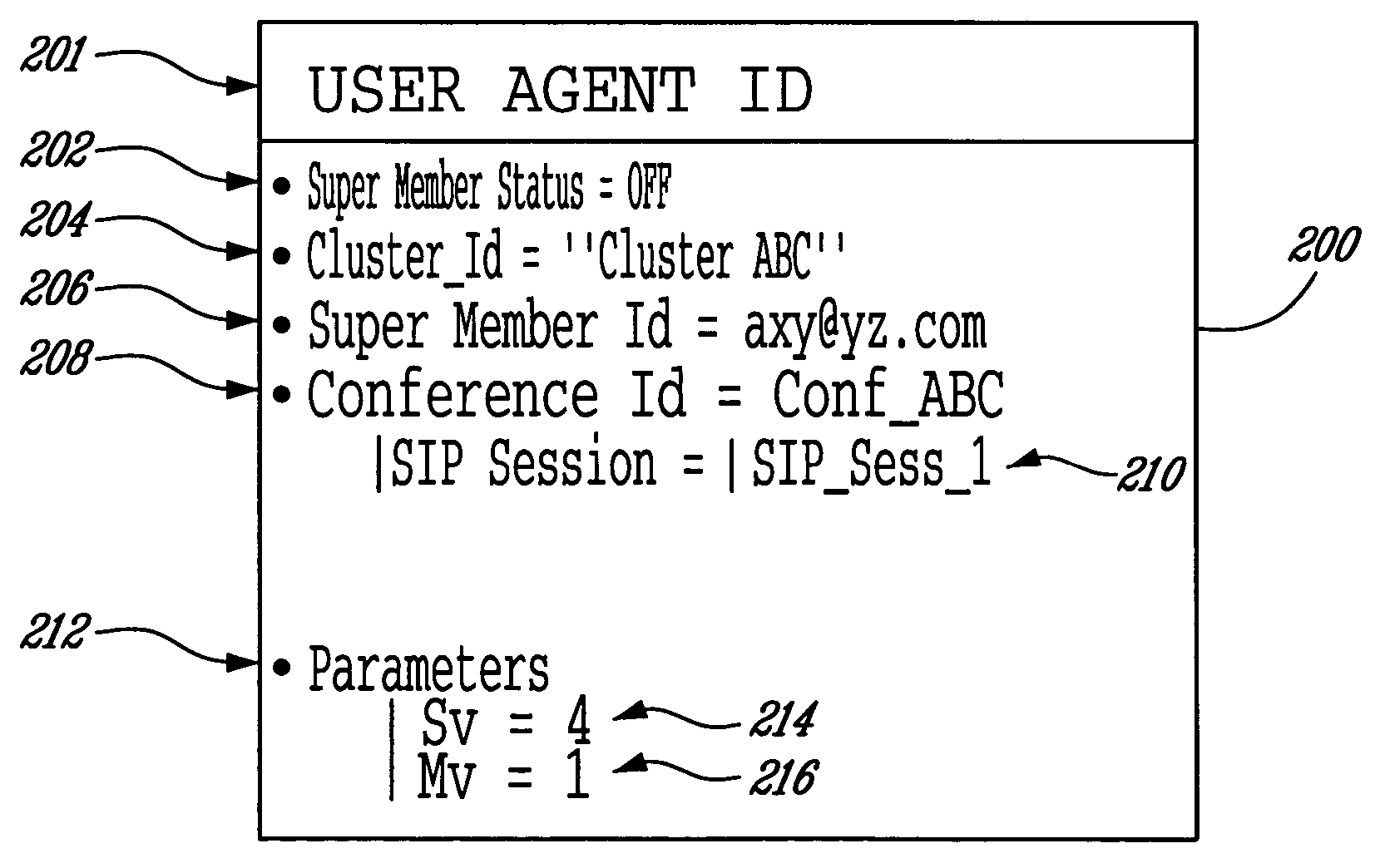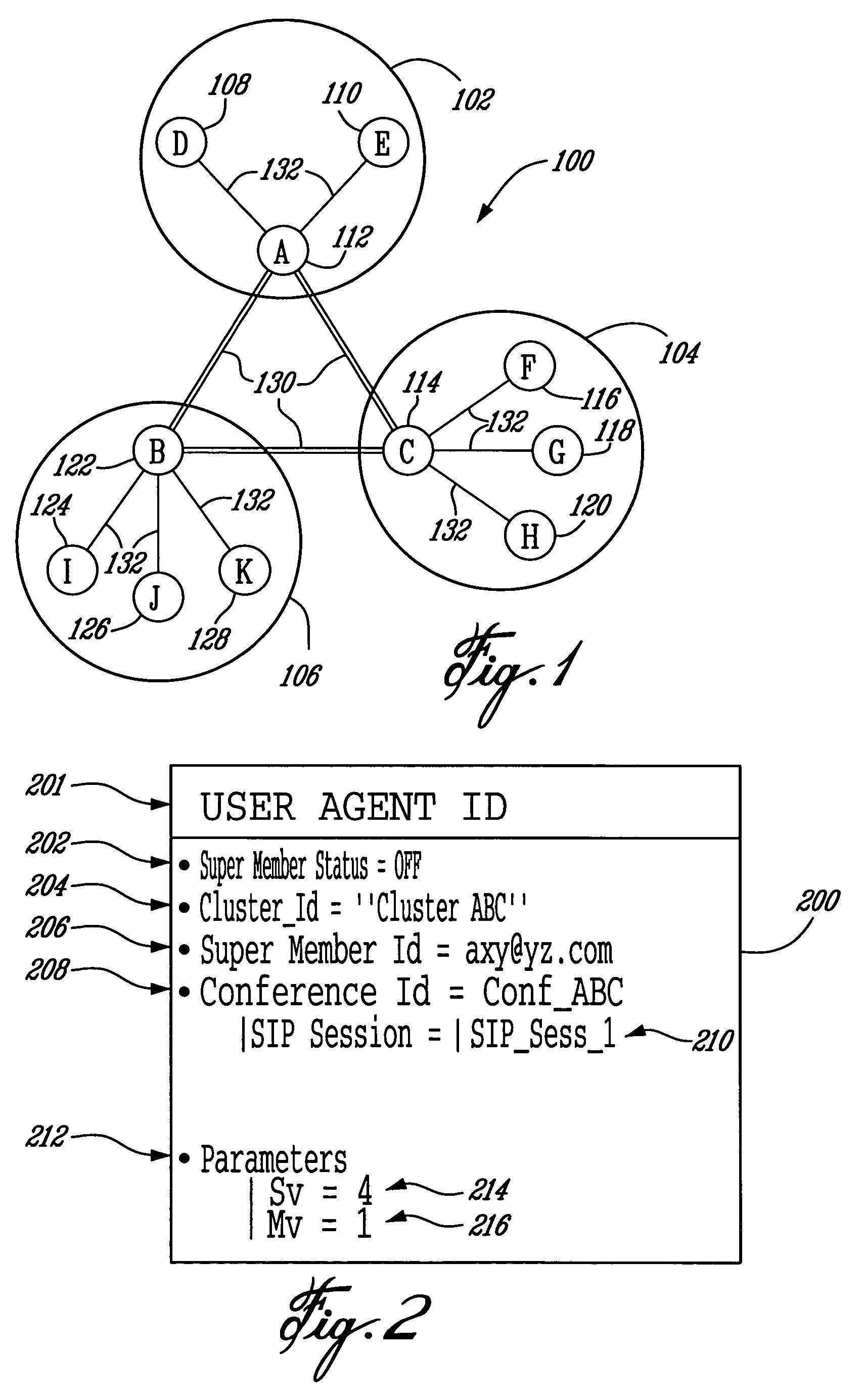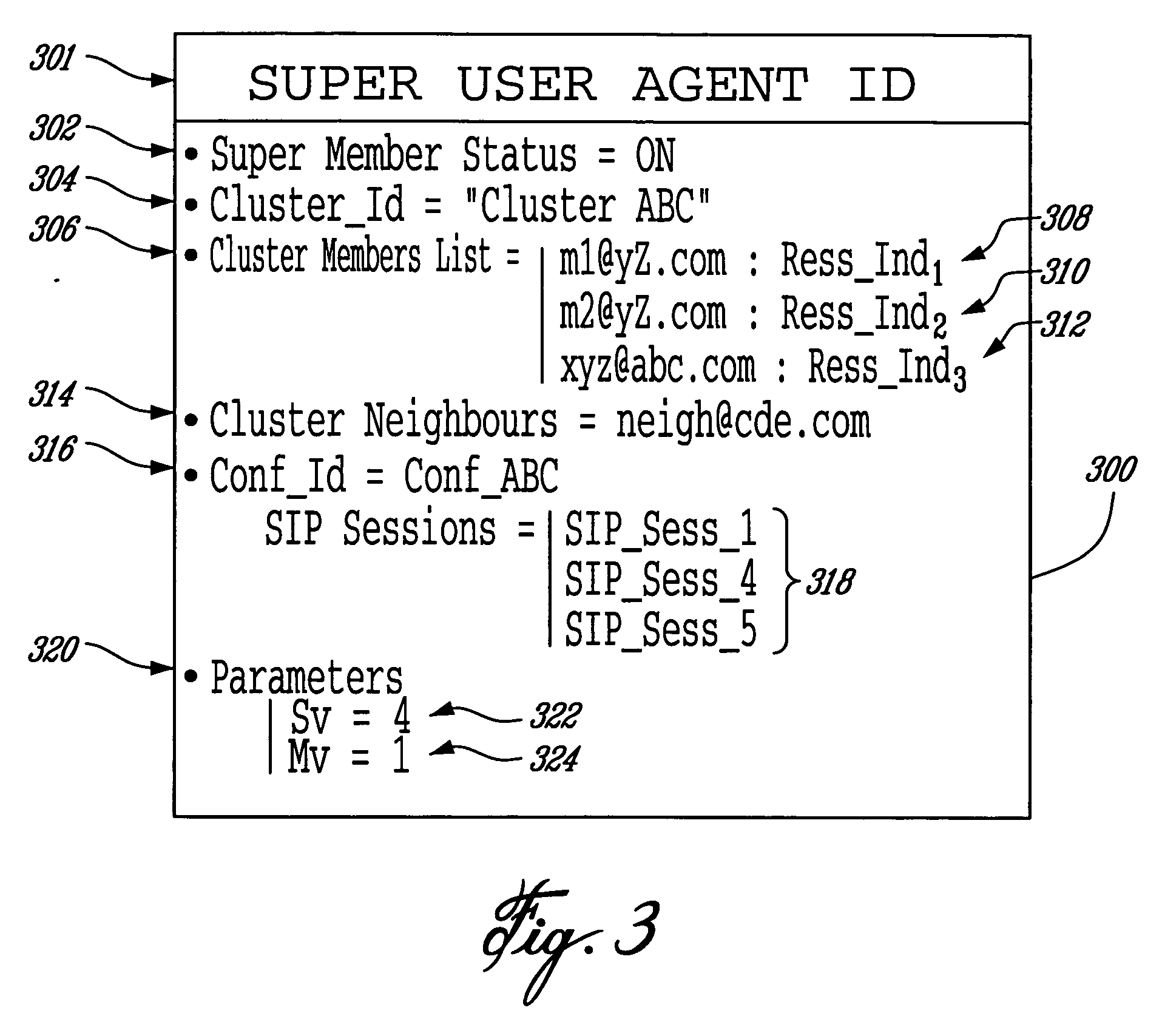Method and conference controller for cluster-based conferencing
a cluster-based conferencing and conference controller technology, applied in the field of cluster-based communications, can solve the problems of no or little work done so far on lack of pre-existing and non-transient infrastructure, and difficulty in signaling in peer-to-peer ad-hoc networks
- Summary
- Abstract
- Description
- Claims
- Application Information
AI Technical Summary
Problems solved by technology
Method used
Image
Examples
Embodiment Construction
[0043] The innovative teachings of the present invention will be described with particular reference to various exemplary embodiments. However, it should be understood that this class of embodiments provides only a few examples of the many advantageous uses of the innovative teachings of the invention. In general, statements made in the specification of the present application do not necessarily limit any of the various claimed aspects of the present invention. Moreover, some statements may apply to some inventive features but not to others. In the drawings, like or similar elements are designated with identical reference numerals throughout the several views.
[0044] In peer-to-peer ad-hoc networks there is no centralized signaling entity. Signaling sessions should be maintained dynamically because participants may join or leave at any time. This implies that information is properly propagated to all nodes, although there is no centralized server. Furthermore, the system should be s...
PUM
 Login to View More
Login to View More Abstract
Description
Claims
Application Information
 Login to View More
Login to View More - R&D
- Intellectual Property
- Life Sciences
- Materials
- Tech Scout
- Unparalleled Data Quality
- Higher Quality Content
- 60% Fewer Hallucinations
Browse by: Latest US Patents, China's latest patents, Technical Efficacy Thesaurus, Application Domain, Technology Topic, Popular Technical Reports.
© 2025 PatSnap. All rights reserved.Legal|Privacy policy|Modern Slavery Act Transparency Statement|Sitemap|About US| Contact US: help@patsnap.com



